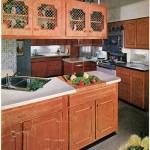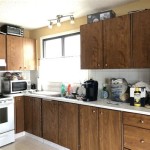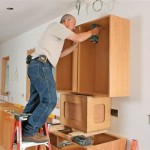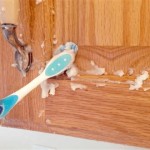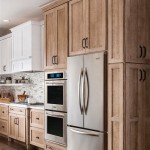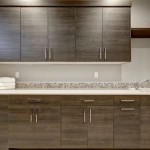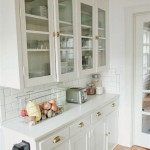Can You Re-Laminate Kitchen Cabinets?
Re-laminating kitchen cabinets can be an effective way to update the look of your kitchen without replacing the entire cabinet structure. It is a relatively simple process that does not require extensive carpentry skills or tools, making it a suitable DIY project. Here are some essential aspects to consider when re-laminating kitchen cabinets.
Surface Preparation
Adequately preparing the surface of the cabinets is crucial for successful lamination. Begin by removing all hardware, such as handles and hinges, and thoroughly cleaning the surfaces with a degreaser to eliminate any dirt or oil that could impede adhesion. Lightly sand the surface using fine-grit sandpaper to roughen it and promote better bonding.
Choosing the Right Laminate
The type of laminate you choose will determine the aesthetics and durability of your cabinets. Consider the thickness, texture, and pattern that best complements your kitchen design and desired functionality. High-pressure laminates (HPL) are a popular choice, as they are durable, easy to clean, and available in a wide range of finishes.
Applying the Laminate
Position the laminate sheet on the cabinet surface, ensuring it is aligned correctly. Use a sharp utility knife to trim the edges and make precise cuts for corners or curved areas. Apply contact adhesive to the back of the laminate and spread it evenly. Firmly press the laminate onto the cabinet, starting from the center and working your way outwards to avoid air bubbles.
Trimming and Finishing
After the laminate has bonded, carefully trim any excess material around the edges with a flush trim bit or utility knife. Use a fine-grit sandpaper to smooth and round the edges for a seamless appearance. Reinstall the hardware and make any necessary adjustments to ensure proper fit and functionality.
Additional Considerations
When re-laminating kitchen cabinets, keep these additional factors in mind:
- Use a sharp blade and a steady hand for precise cutting and trimming.
- Overlapping the laminate by about 1/8 inch at corners and edges will provide extra strength.
- Allow the adhesive to dry completely before using or cleaning the cabinets.
- Laminates may be susceptible to heat and moisture, so avoid placing them near heat sources or in areas prone to moisture build-up.
- If the laminate becomes damaged or scratched over time, it can be repaired using a laminate repair kit or replaced.

How To Paint Laminate Kitchen Cabinets Perfect Finish Tips

A Year In Review Of How I Painted My Laminate Cabinets With Two Methods

How To Add Trim And Paint Your Laminate Cabinets

Painted Laminate Cupboards Kitchen Painting Cabinets

How To Paint Laminate Cabinets Everything You Need Know

How Do You Paint Laminate Kitchen Cupboards When They Re Ling Hometalk

How To Refinish Melamine Cabinets

How To Paint Laminate Kitchen Cabinets Perfect Finish Tips

How To Paint Laminate Kitchen Cabinets Eatwell101

How To Add Trim And Paint Your Laminate Cabinets

